
The Boeing XF8B was a single-engine aircraft developed by Boeing during World War II to provide the United States Navy with a long-range shipboard fighter aircraft. The XF8B was intended for operation against the Japanese home islands from aircraft carriers outside the range of Japanese land-based aircraft. Designed for various roles including interceptor, long-range escort fighter, dive-bomber, and torpedo bomber, the final design embodied a number of innovative features in order to accomplish the various roles. Despite its formidable capabilities, the XF8B-1 never entered series production.

The Boeing P-12/F4B was an American pursuit aircraft that was operated by the United States Army Air Corps, United States Marine Corps, and United States Navy.

The Vought XF3U was the prototype of a two-seat, all-metal biplane fighter, built by Vought Aircraft Company of Dallas, Texas for the United States Navy.

The Vought SBU-1 Corsair was a two-seat, all-metal biplane dive bomber built by Vought Aircraft Company of Dallas, Texas for the US Navy. Its design was based upon the F3U-1 two-seat fighter that was abandoned when the Navy decided not to obtain any more two-seat fighters.
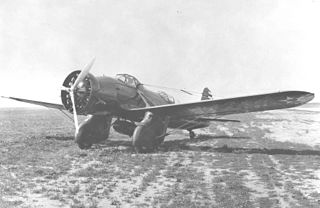
The Curtiss YA-10 Shrike was a 1930s United States test and development version of the A-8 Shrike ground-attack aircraft using various radial engines in place of the inline Vee.

The Vultee XA-41 was originally ordered as a dive bomber. After combat experience led the Army Air Corps to believe dive-bombers were too vulnerable to enemy fighters, the contract was amended to change the role to low-level ground attack. Although the XA-41 was a potent weapons system, the design was overtaken by more advanced technology, and never entered production.

The Grumman XTSF was a proposed twin-engine torpedo scout aircraft, designed by Grumman for the United States Navy towards the end of World War II. Based on the design of the Grumman F7F Tigercat fighter, but enlarged and with the addition of a bomb bay, the XTSF was deemed too large for carrier operations, and the project was cancelled before any aircraft were built. Instead, the Navy chose to order the single-engine XTB3F, which became the successful AF Guardian.
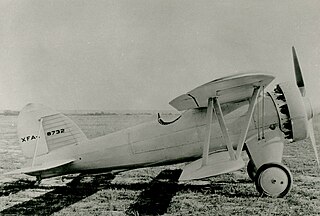
The General Aviation XFA was an American biplane fighter aircraft built by the General Aviation Company for the United States Navy.

The Berliner-Joyce XFJ was a United States prototype biplane fighter aircraft that first flew in May 1930. Designed by Berliner-Joyce Aircraft for the United States Navy, its lower wing, placed below the fuselage and just two feet above the ground, apparently gave it a tendency to ground loop when landing, and it was never ordered for production.

The Vought XF2U was a prototype biplane fighter aircraft evaluated by the United States Navy at the end of the 1920s, but was already outclassed by competing designs and never put into production.
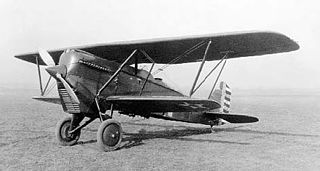
The Boeing XP-7 was a prototype United States biplane fighter of the 1920s.

The Boeing XP-15 was an American prototype monoplane fighter.

The Boeing P-29 and XF7B-1 were an attempt to produce a more advanced version of the highly successful P-26. Although slight gains were made in performance, the U.S. Army Air Corps and U.S. Navy did not order the aircraft.
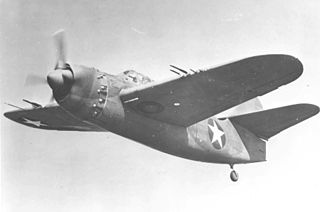
The Brewster XA-32 was an American attack aircraft, a mid-wing type with an internal bomb bay. The prototype had the R-2800 engine, but it could take the intended R-4360 powerplant. After a dismal set of test results, the XA-32 did not enter production.
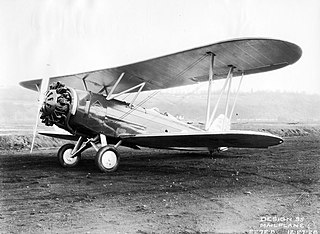
The Boeing Model 95 was a single engine biplane mailplane built by Boeing in the United States in the late 1920s to supplement the Boeing Model 40s being used on Boeing's airmail routes.

The Douglas XFD was a carrier-based biplane fighter aircraft designed for the United States Navy, and the first fighter to be built by the Douglas Aircraft Company. A victim of changing requirements, no production was undertaken.

The Wright XF3W was an American racing aircraft built by Wright Aeronautical for the United States Navy.

The Northrop XFT was an American prototype fighter aircraft of the 1930s. A single engined low-winged monoplane, it was designed and built to meet a United States Navy order for an advanced carrier based fighter. It exhibited poor handling, and was rejected by the Navy, the single prototype being lost in a crash. A variant, the Northrop 3A, also was unsuccessful.

The Vought V-141 was a prototype American single-seat fighter aircraft of the 1930s. It was a development of the unsuccessful Northrop 3-A design, but was itself a failure, being rejected by the United States Army Air Corps. The sole prototype was sold to the Japanese Army in 1937, but no production followed, with the type proving to be inferior to existing Japanese fighters.

The Berliner-Joyce XF2J was the company's second biplane fighter for the United States Navy. The XF2J was ordered on 30 June 1931 and although designated as a two-seat fighter, it was used as an observation aircraft.




















